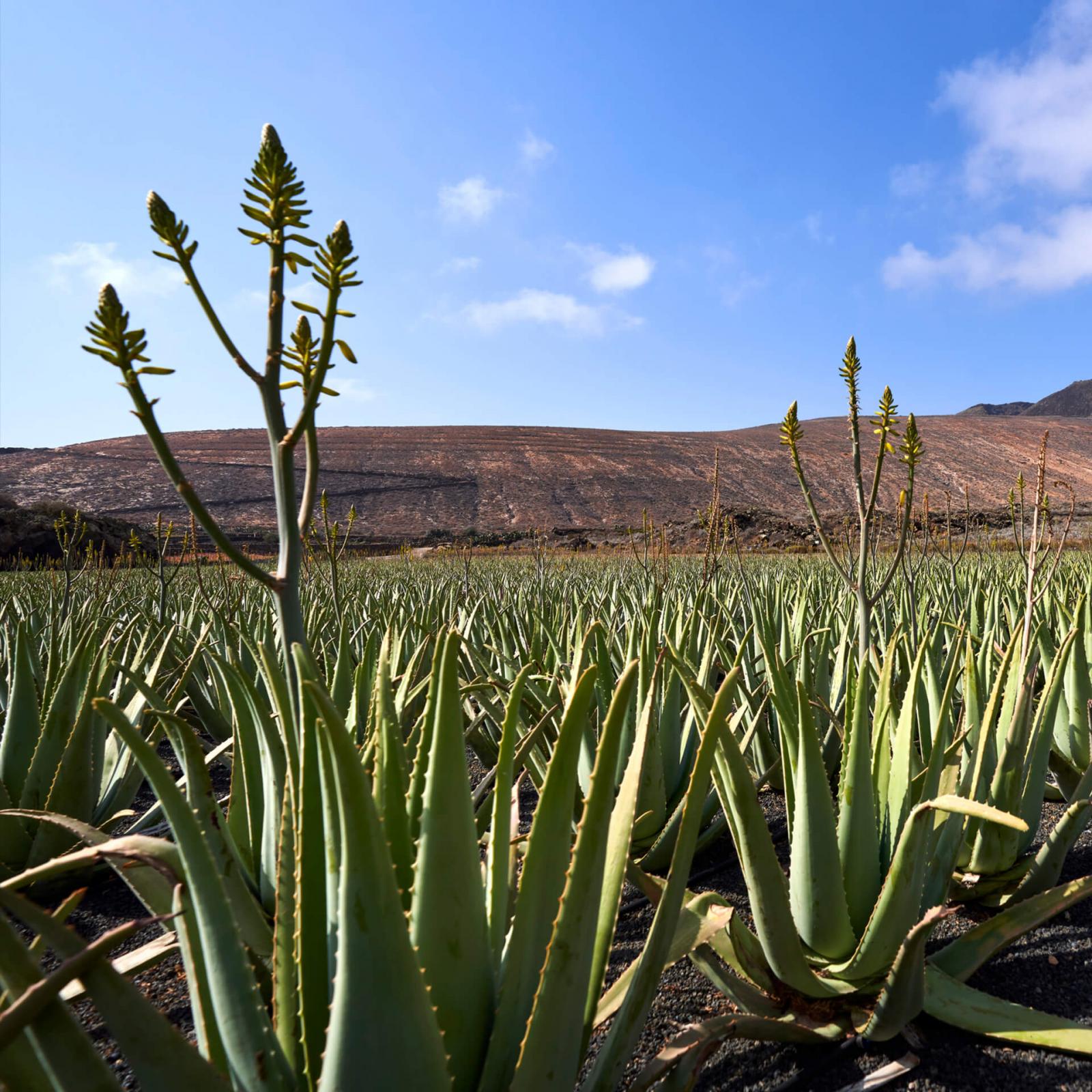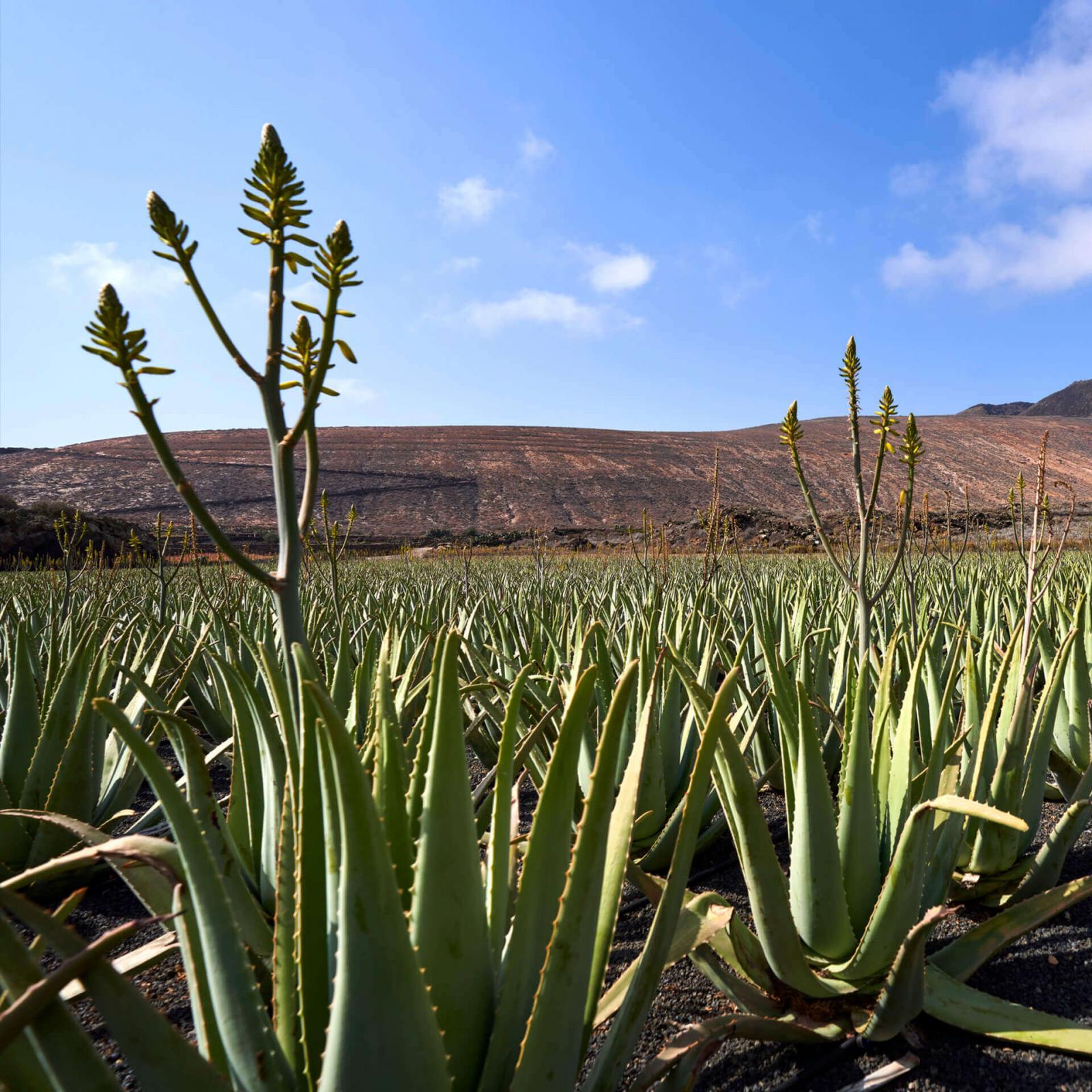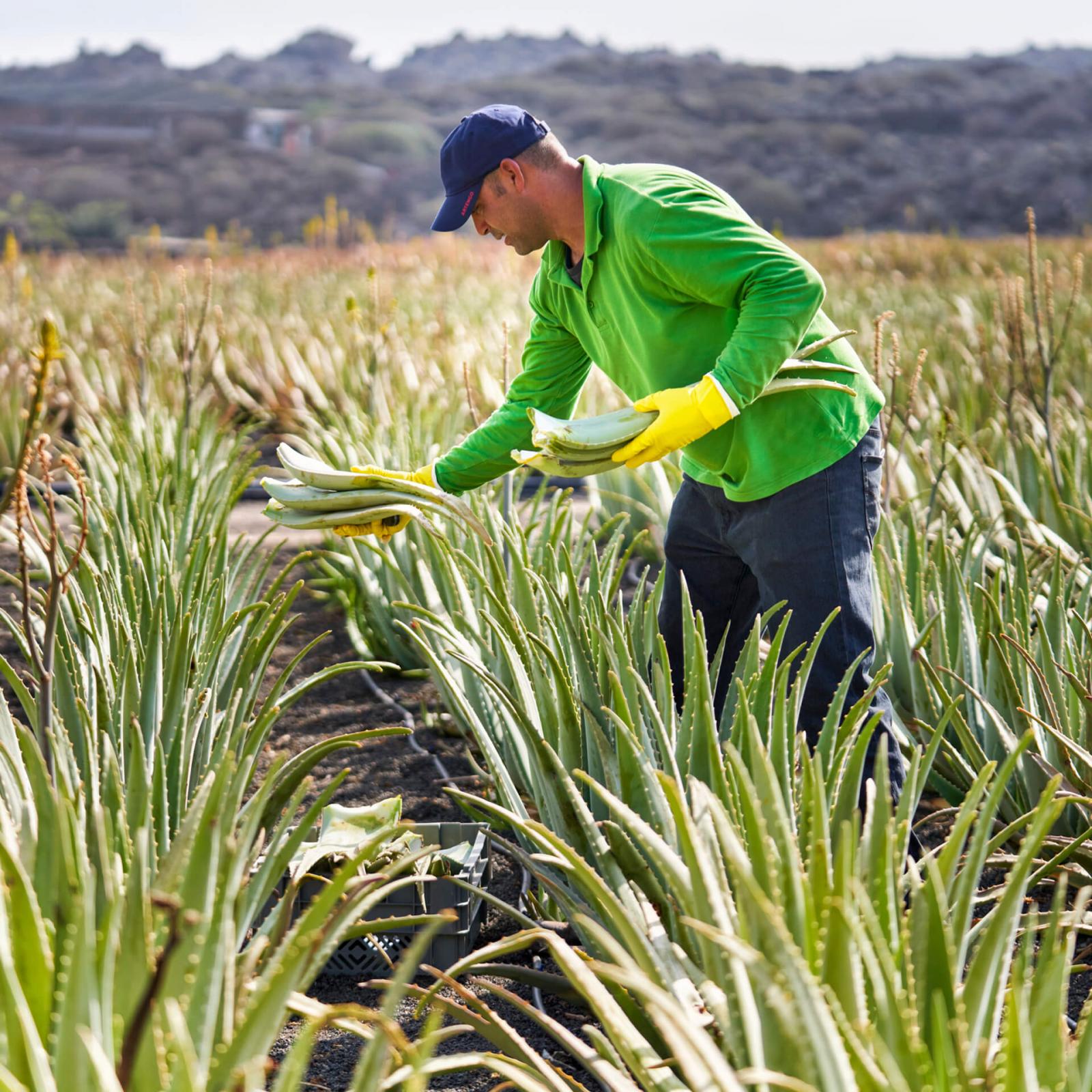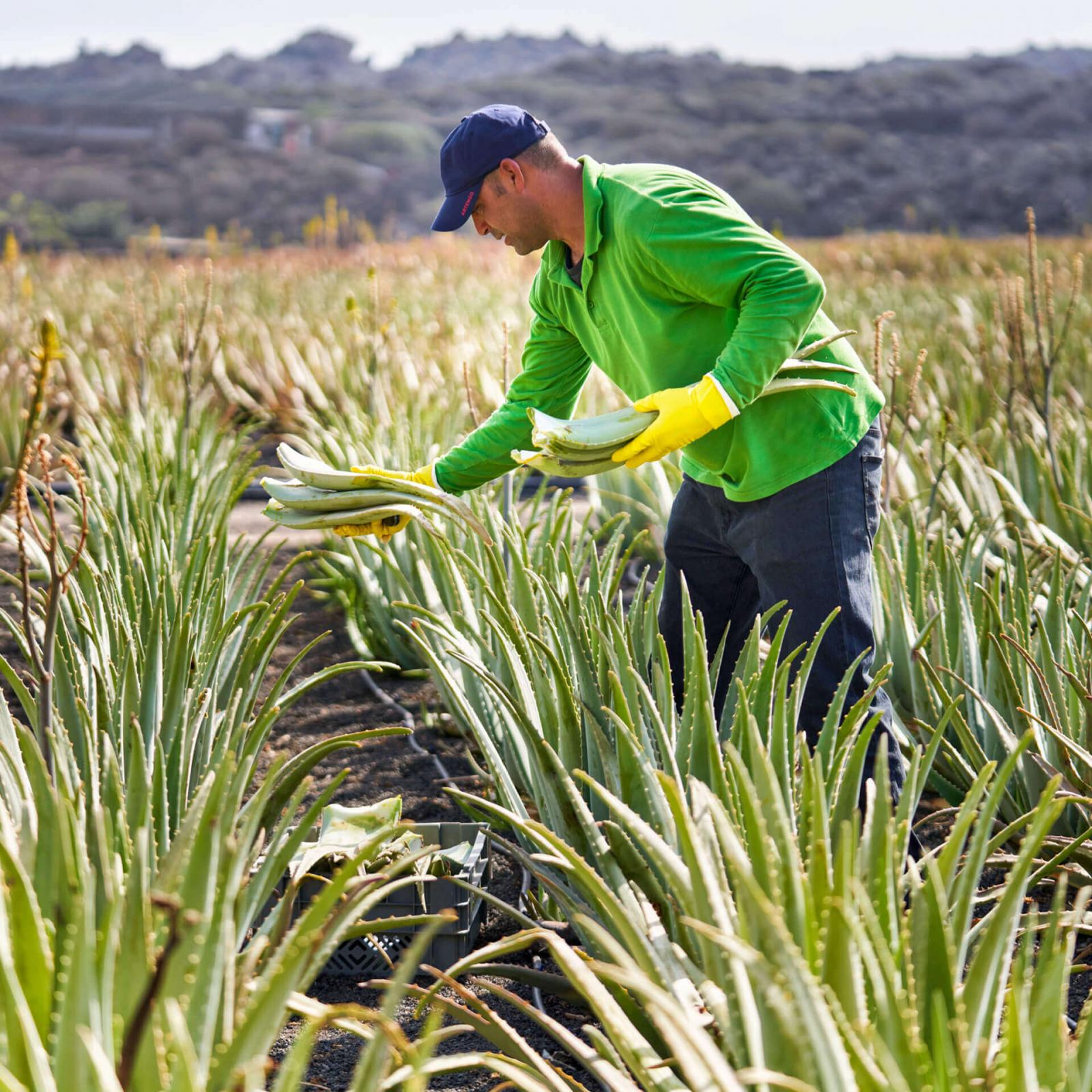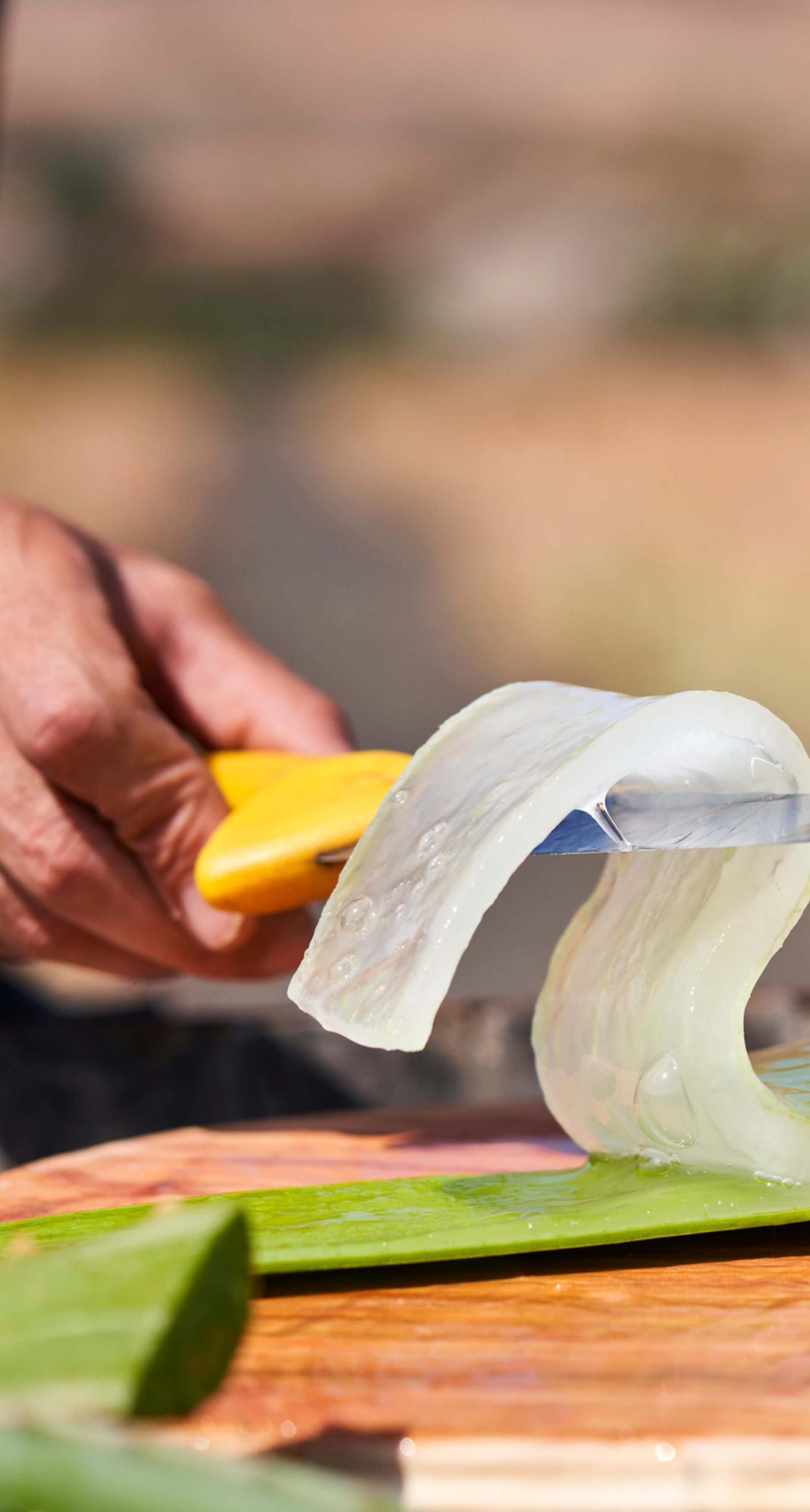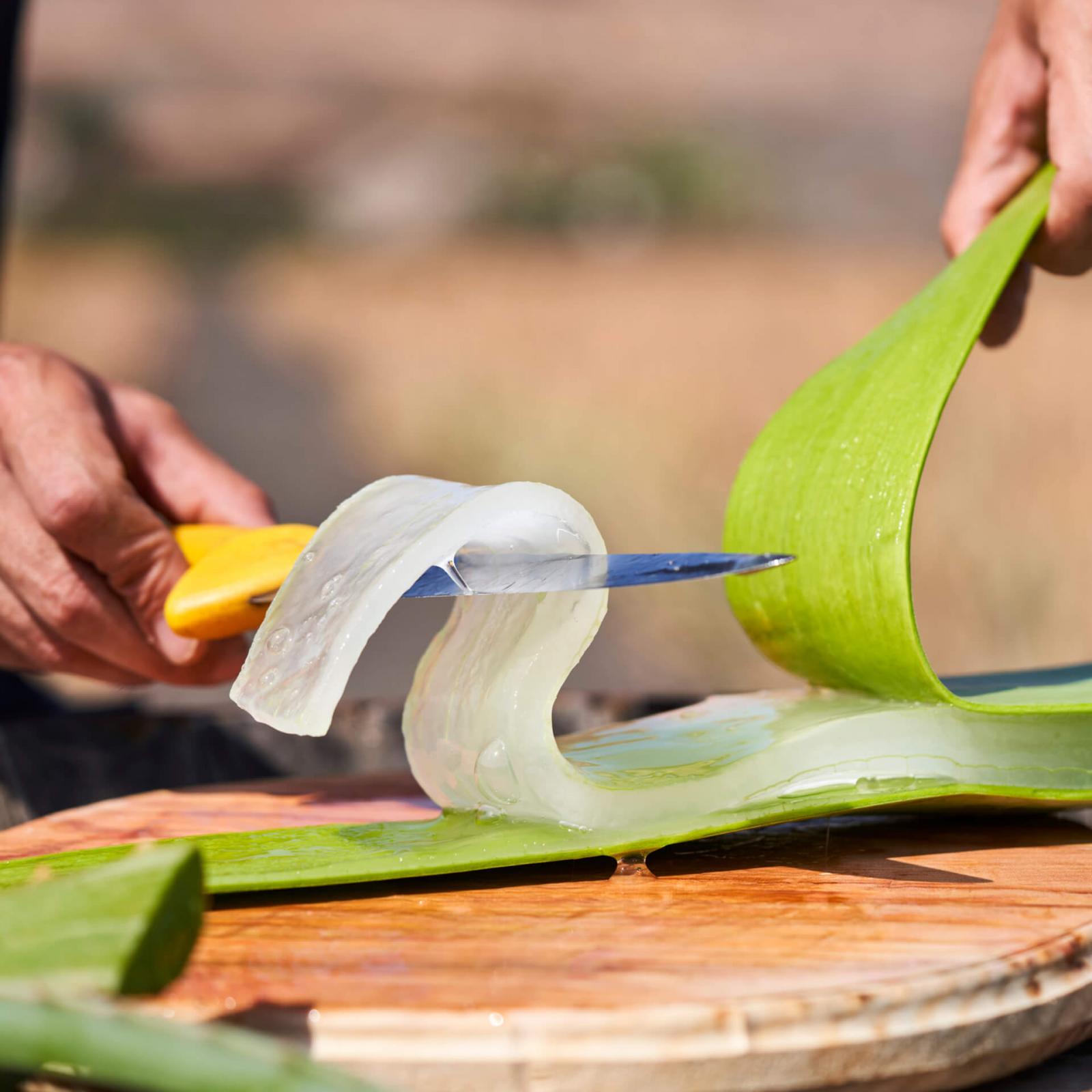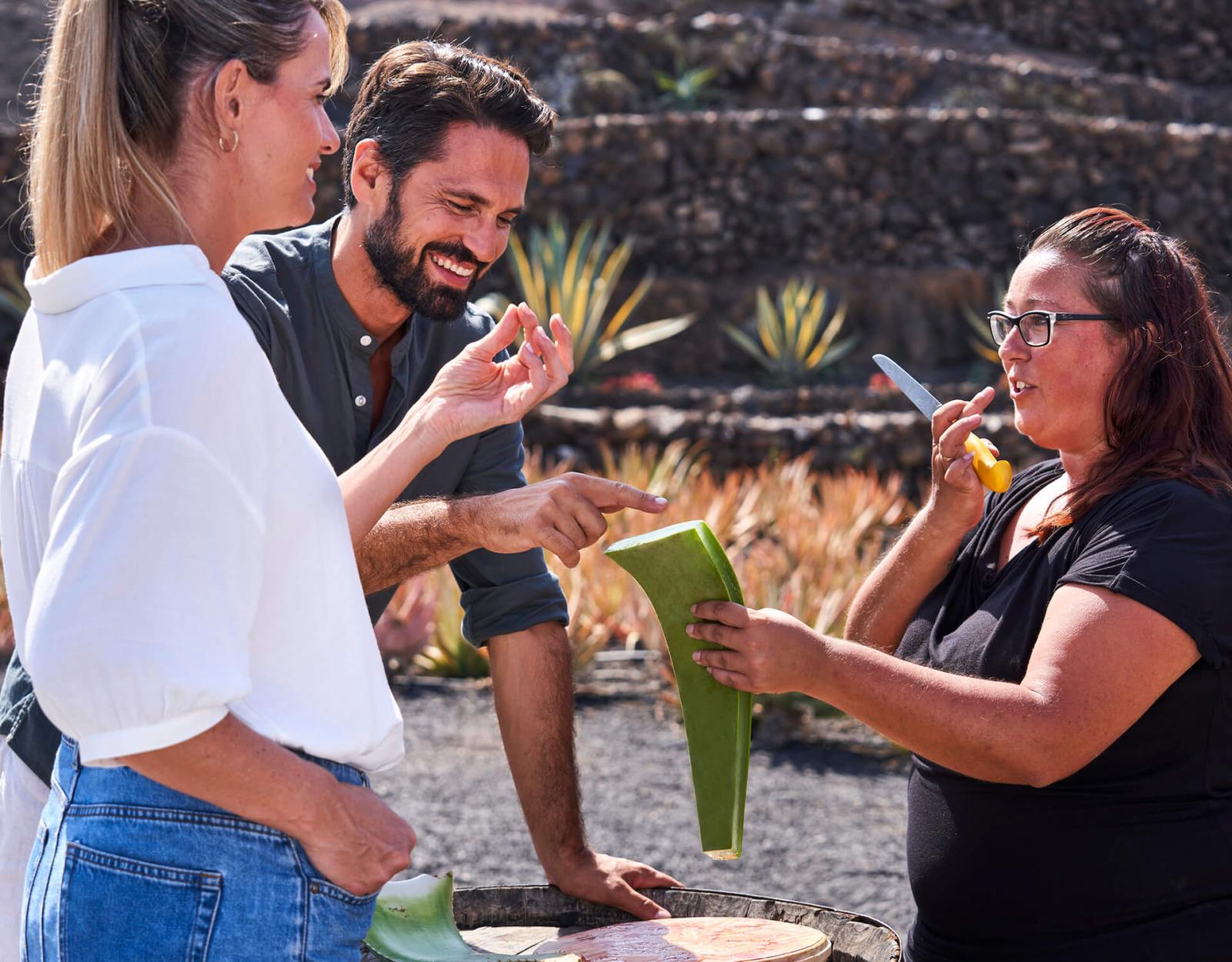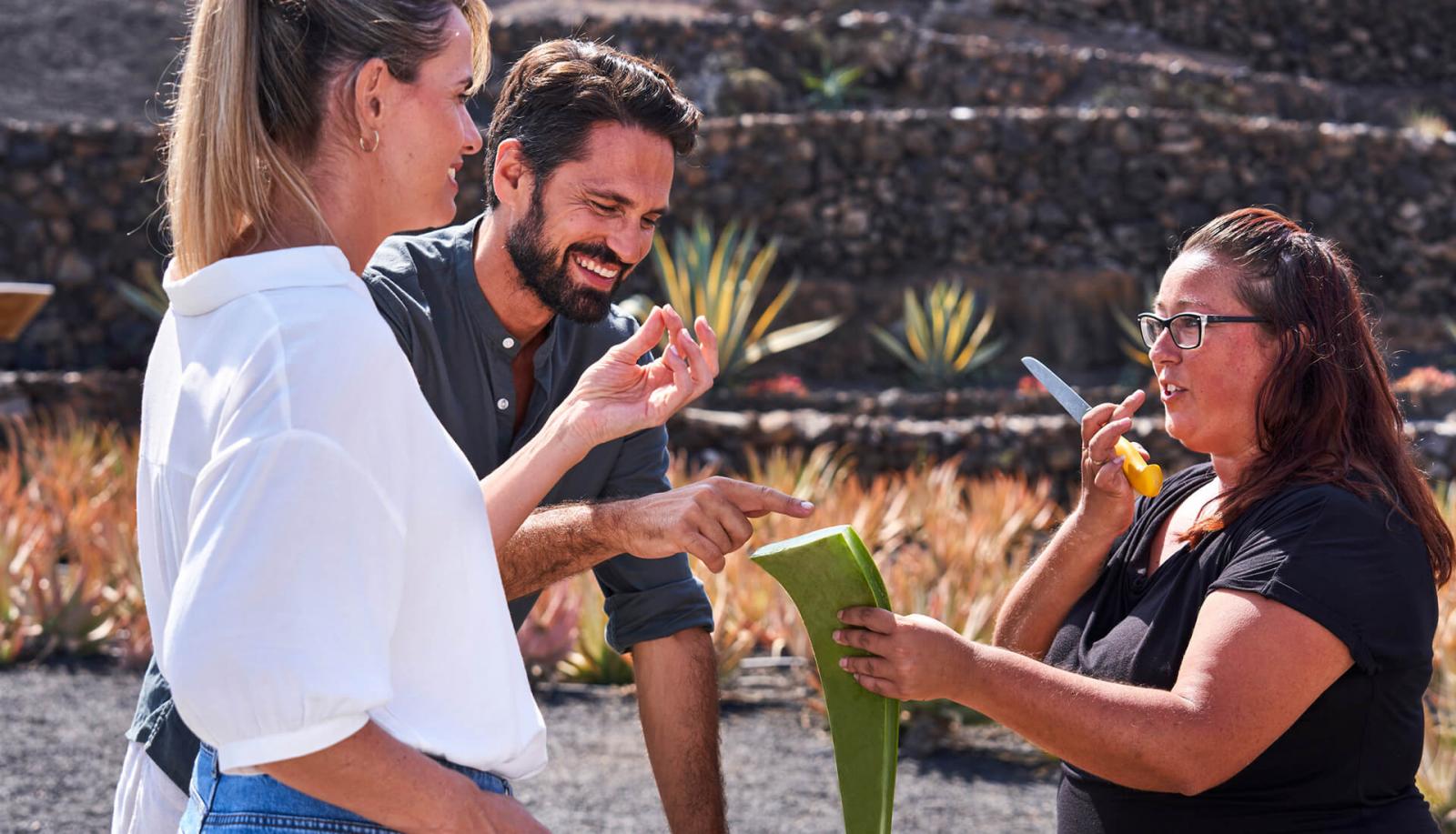Thanks to the bounty of the climate and the volcanic soil, the aloe vera that grows in the Canary Islands has superior qualities to that found in other places. The ancient indigenous people were aware of its healing properties: it relieves pain and heals, is a natural antiseptic and antiallergen… Today it is sold in numerous formats on the islands, and has become a veritable Canarian icon for improving your wellbeing.
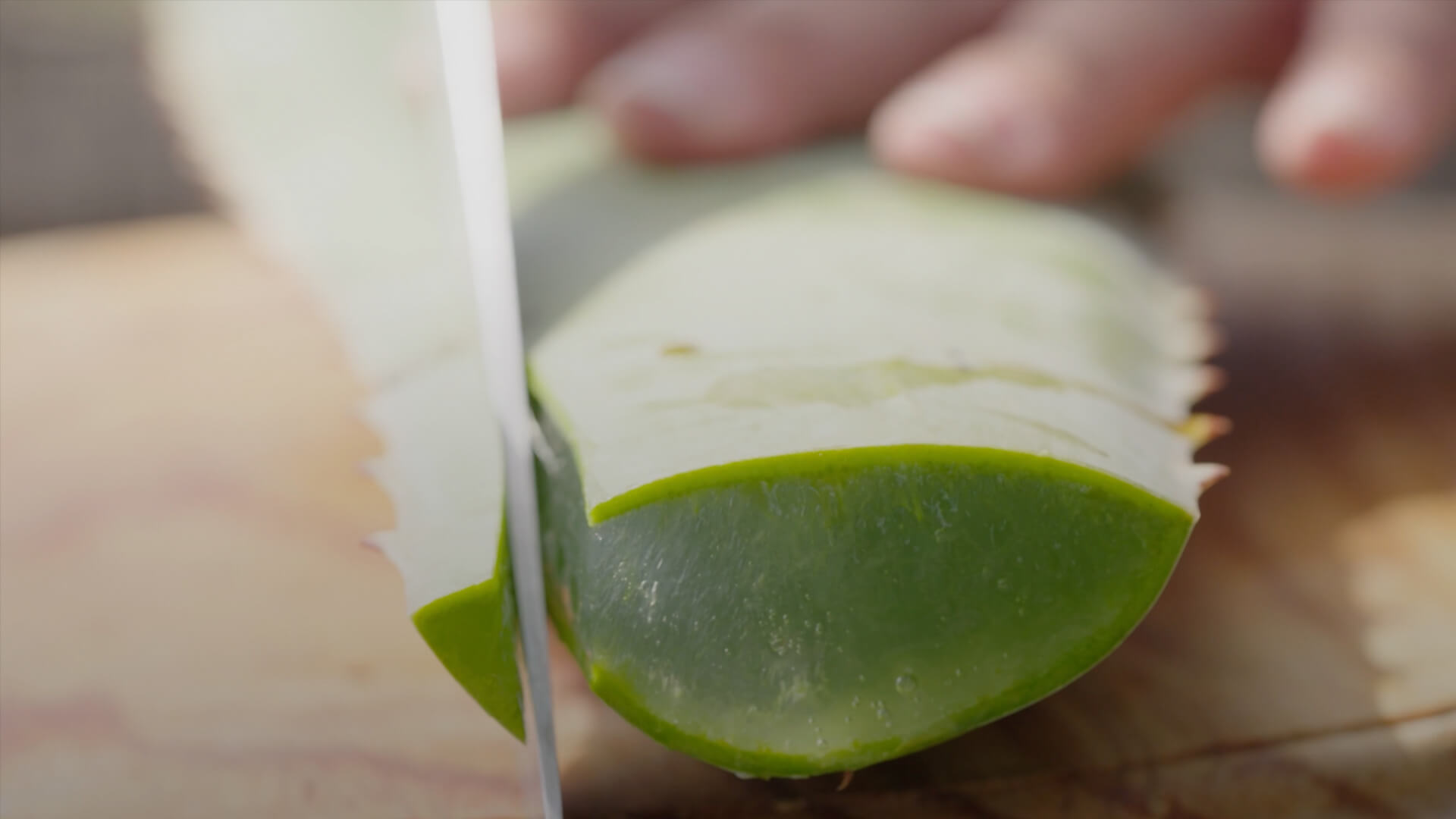


Since ancient times
Aloe vera, as the plant Aloe barbadensis is known, originates from North Africa and the Macaronesian archipelagos of the Canaries, Cape Verde and Madeira. Since antiquity this plant has been mentioned in different treatises, such as the Ebers Papyrus (1500 BC) which contains texts on Egyptian medicine, describing a dozen remedies that use aloe vera.
It is one of the hundreds of autochthonous plant species of the Canary Islands, and its healing properties and health benefits were already well known by the indigenous people. After the conquest and subsequent colonisation of the archipelago, this knowledge was passed down from generation to generation thanks to herbalists and people like shepherds, who knew the territory and the plants that grew in it like the palm of their hand.
The testimony of travellers
Christopher Columbus is said to have taken aloe vera to America from the Canary Islands, and numerous European travellers in the centuries thereafter noticed the plant and recorded it in their writings. In his “Description of the Canary Islands” (1764), the Scottish seaman George Glas extolled the climate of the islands as “extremely healthy… [and] the natives enjoy health and longevity beyond any other people in the world”, and among the plant species that grew spontaneously, without cultivation, he cites “the aloes-shrub”. After a scientific expedition to the archipelago in the early 19th century, the French Count of Poudenx described the wine-producing area of Monte Lentiscal in Gran Canaria, together with “volcanic mountains covered with cactus and aloes”.
Unique properties
This small evergreen perennial, which is harvested all year long, and which can reach heights ranging from 30 cm to a little over one metre, is tended to with habitual organic farming techniques: free from pesticides, herbicides and fertilizers. As a result, it is not only exploited for its topical and healing properties, or to protect against the sun’s rays or burns, but is also taken orally, as it reduces cholesterol and glucose levels in the blood, and regulates blood pressure. In addition, in recent years its numerous properties have been endorsed by scientific publications, which speak of its protective effect on the gastrointestinal tract.
Advantages of the aloe vera of the Canary Islands
Aloe vera contains 18 of the 22 amino acids present in the human organism, including seven of the eight that are considered essential. It also contains a natural cell regenerator: acemannan. This polysaccharide has immunostimulant, antiviral, antineoplastic and gastrointestinal properties and in the Canary Islands, the aloe vera is particularly remarkable as it contains four times as much of it as its main competitor, American aloe vera.
The therapeutic properties of aloe vera are determined by the joint action of its 200 components. Some studies of the islands’ aloe vera show that the plants grown in the archipelago are blessed with superior properties to those cultivated in other places around the planet, due to a higher concentration of aloin.

Different Aloe vera formats
The range of products offered by pharmaceutical and cosmetics firms of the Canary Islands includes a broad selection made using aloe vera grown in the archipelago, suitable for improved care of our body’s wellbeing. The most common ones are creams and gels with a wide variety of uses, shampoos, sunscreens and pure juice, for drinking.





